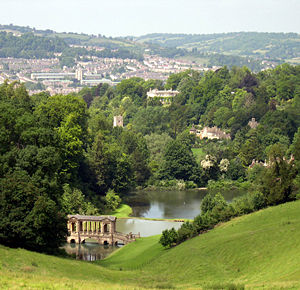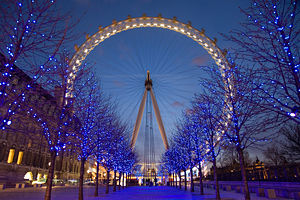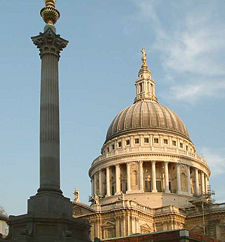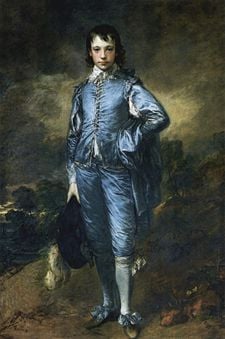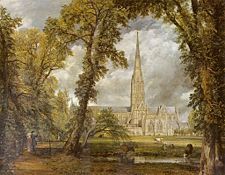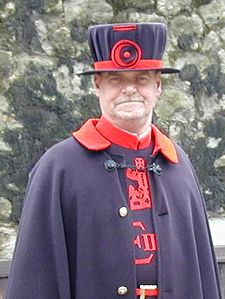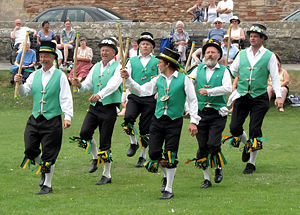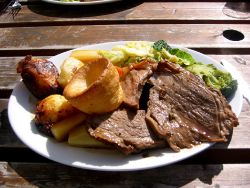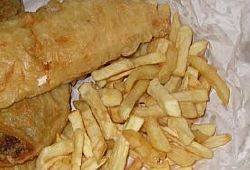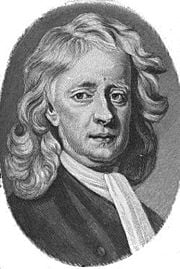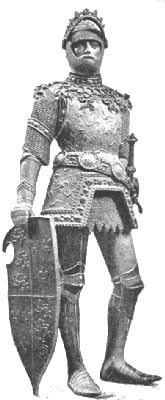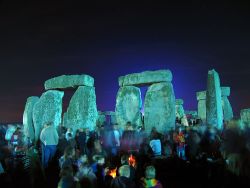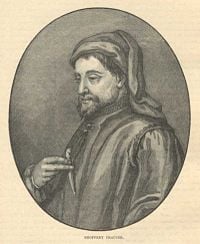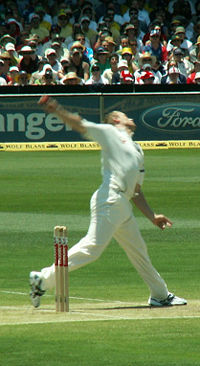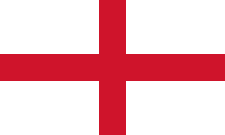Culture of England
The culture of England is sometimes difficult to separate clearly from the culture of the United Kingdom, so influential has English culture been on the cultures of the British Isles and, on the other hand, given the extent to which other cultures have influenced life in England.
From the relatively tiny island in the North Atlantic, England has influenced virtually every other nation in the world. The country has played a central and significant role in history as one of the world's most influential centers of cultural development. It is known throughout the world for its distinctive culture, habits, values, and traditions, and for its rich and colorful history. Places, people, buildings, monuments, myths, and legends hold intrigue for many.
Many of the most important figures in the history of modern western scientific and philosophical thought were either born in, or at one time or other resided in, England. Major English thinkers of international significance include scientists such as Sir Isaac Newton, Francis Bacon, Charles Darwin and New Zealand-born Ernest Rutherford, philosophers such as John Locke, John Stuart Mill, Bertrand Russell, and Thomas Hobbes, and economists such as David Ricardo, and John Maynard Keynes.
Architecture
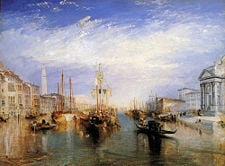
The earliest remnants of architecture in the United Kingdom are mainly Neolithic monuments such as Stonehenge and Avebury, and Roman ruins such as the spa in Bath. Many castles remain from the medieval period and in most towns and villages the parish church is an indication of the age of the settlement, built as they were from stone rather than the traditional wattle and daub.
Over the two centuries following the Norman conquest of 1066, and the building of the Tower of London, many great castles such as Caernarfon Castle in Wales and Carrickfergus Castle in Ireland were built to suppress the natives. Windsor Castle is the largest inhabited castle in the world and the oldest in continuous occupation. Large houses continued to be fortified until the Tudor period, when the first of the large gracious unfortified mansions such as the Elizabethan Montacute House and Hatfield House were built.
The English Civil War (1642-1649) proved to be the last time in British history that houses had to survive a siege. Corfe Castle was destroyed following an attack by Oliver Cromwell's army, but Compton Wynyates survived a similar ordeal. Inigo Jones, from just before the Civil War, and who is regarded as the first significant British architect, was responsible for importing Palladian architecture to Britain from Italy. The Queen's House at Greenwich is perhaps his best surviving work.
Following the Great Fire of London in 1666, one of the best-known British architects, Sir Christopher Wren, was employed to design and rebuild many of the ruined ancient churches of London, although his master plan for rebuilding London as a whole was rejected. It was in this period that he designed the building that he is perhaps best known for, St Paul's Cathedral.
In the early eighteenth century baroque architecture—popular in Europe—was introduced, and Blenheim Palace was built. However, baroque was quickly replaced by a return of the Palladian form. The Georgian architecture of the eighteenth century was an evolved form of Palladianism. Many existing buildings such as Woburn Abbey and Kedleston Hall are in this style. Among the many architects of this form of architecture and its successors, neoclassicism and Romanticism, were Robert Adam, Sir William Chambers, and James Wyatt.
In the early nineteenth century the romantic medieval gothic style appeared as a backlash to the symmetry of Palladianism, and such buildings as Fonthill Abbey were built. By the middle of the nineteenth century, as a result of new technology, construction incorporated steel. One of the greatest exponents of this was Joseph Paxton, architect of the Crystal Palace. Paxton also continued to build such houses as Mentmore Towers, in the still popular retrospective English Renaissance styles. In this era of prosperity and development British architecture embraced many new methods of construction, but ironically in style, such architects as August Pugin ensured it remained firmly in the past.
At the beginning of the twentieth century a new form of design—arts and crafts—became popular. The architectural form of this style, which had evolved from the nineteenth century designs of such architects as George Devey, was championed by Edwin Lutyens. Arts and crafts in architecture is symbolized by an informal, non-symmetrical form, often with mullioned or lattice windows, multiple gables and tall chimneys. This style continued to evolve until World War II.
Following the Second World War reconstruction went through a variety of phases, but was heavily influenced by Modernism, especially from the late 1950s to the early 1970s. Many bleak town center redevelopments—criticized for featuring hostile, concrete-lined "windswept plazas"—were the fruit of this interest, as were many equally bleak public buildings, such as the Hayward Gallery. Many Modernist-inspired town centers are today in the process of being redeveloped.
In the immediate post-war years, perhaps hundreds of thousands of council houses in vernacular style were built, giving working class people their first experience of private gardens and indoor sanitation.
Modernism remains a significant force in English architecture, although its influence is felt predominantly in commercial buildings. The two most prominent proponents are Lord Rogers of Riverside, who created Rogers' the iconic London Lloyd's Building and the Millennium Dome, and Lord Foster of Thames Bank, who created the Swiss Re Buildings (also known as "The Gherkin") and the City Hall (London).
Since England has one of the highest population densities in Europe, housing tends to be smaller and more closely packed, particularly compared to North America. The British have a particular affinity with the terraced house, dating back to the aftermath of the Great Fire of London. The majority of surviving housing built before 1914 is of this type, and consequently it dominates inner residential areas. In the twentieth century the process of suburbanization led to a spread of semi-detached and detached housing. In the aftermath of the Second World War, public housing was dramatically expanded to create a large number of council estates, although most units in these have since been bought by their tenants.
Art
The oldest art in the United Kingdom can be dated to the Neolithic period, and is found in a funerary context. But it is in the Bronze age that the first innovative artworks are found. The Beaker people, who arrived in Britain around 2500 B.C.E., were skilled in metal refining, working at first in copper, but later bronze and gold. The Wessex culture excelled in making gold ornaments. Works of art placed in graves or sacrificial pits have survived.
In the Iron Age, the Celts made gold ornaments, but stone and most likely wood was also used. This style continued into the Roman period, and would find a renaissance in the Medieval period. It also survived in the Celtic areas not occupied by the Romans, largely corresponding to the present-day Wales and Scotland.
The Romans brought with them the classical style, glasswork and mosaics. Christian art from the fourth century, has been preserved in mosaics with Christian symbols and pictures. Celtic and Scandinavian art have in common the use of intricate, intertwined patterns of decoration.
Anglo-Saxon sculpting was outstanding for its time in the eleventh century, as proved by pre-Norman ivory carvings. Celtic high crosses show the use of Celtic patterns in Christian art. Scenes from the Bible were depicted, framed with the ancient patterns. Some ancient symbols were redefined. Murals were painted on the white-chalked walls of stone churches, and stained glass was used in church and other windows.
As a reaction to abstract expressionism, pop art emerged originally in England at the end of the 1950s.
Significant figures in English art include William Blake, William Hogarth, J.M.W. Turner, and John Constable in the eighteenth and early nineteenth centuries. Twentieth century artists included Francis Bacon, David Hockney, Bridget Riley, and the pop artists Richard Hamilton, and Peter Blake. New York-born Sir Jacob Epstein was a pioneer of modern sculpture. More recently, the so-called Young British Artists have gained some notoriety, particularly Damien Hirst and Tracey Emin. Notable illustrators include Aubrey Beardsley, Roger Hargreaves, and Beatrix Potter.
England is home to the National Gallery, Tate Britain, Tate Liverpool, Tate St. Ives, and the Tate Modern.
Cinema
England has been influential in the technological, commercial, and artistic development of cinema and probably second only to the United States in producing the greatest quantity of world-wide film stars. Despite a history of successful productions, the industry is characterized by an ongoing debate about its identity (including economic and cultural issues) and the influences of American and European cinema, although it is fair to say a brief "golden age" was enjoyed in the 1940s from the studios of J. Arthur Rank and Korda.
Modern cinema is generally regarded as descending from the work of the French Lumière brothers in 1892, and their show first came to London in 1896. However, the first moving pictures developed on celluloid film were made in Hyde Park, London in 1889 by William Friese Greene, a British inventor, who patented the process in 1890. The film is the first known instance of a projected moving image. The first people to build and run a working 35 mm camera in Britain were Robert W. Paul and Birt Acres. They made the first British film Incident at Clovelly Cottage in February 1895, shortly before falling out over the camera's patent.
Clothing
There is no specifically British national costume. In England, certain military uniforms such as the Beefeater or the Queen's Guard are considered to be symbolic of Englishness, though they are not official national costumes. Morris dancers or the costumes for the traditional English May dance are cited by some as examples of traditional English costume.
This is in large part due to the critical role that British sensibilities have played in world clothing since the eighteenth century. Particularly during the Victorian era, British fashions defined acceptable dress for men of business. Key figures such as Beau Brummell, the future Edward VII and Edward VIII created the modern suit and cemented its dominance. As such, it could be argued that the national costume of the British male is a three-piece suit, necktie and bowler hat—an image regularly used by cartoonists as a caricature of Britishness.
Cuisine
Although highly-regarded in the Middle Ages, English cuisine later became a source of fun among Britain's French and European neighbors, being viewed until the late twentieth century as crude and unsophisticated by comparison with continental tastes. However, with the influx of non-European immigrants (particularly those of south and east Asian origins) from the 1950s onwards, the English diet was transformed. Indian and Chinese cuisine in particular were absorbed into English culinary life. Restaurants and takeaways appeared in almost every town in England, and "going for an Indian" became a regular part of English social life. A distinct hybrid food style composed of dishes of Asian origin, but adapted to British tastes, emerged and was subsequently exported to other parts of the world. Many of the well-known Indian dishes, such as Tikka Masala and Balti, are in fact Anglo-Indian dishes of this sort. Chicken Tikka Masala is often jokingly referred to as England's national dish, in a reference both to its English origins and to its enormous popularity.
Dishes forming part of the old tradition of English food include: Apple pie, bangers and mash, bubble and squeak, cornish pasty, cottage pie, egg salad, fish and chips, full English breakfast, gravy, jellied eels, Lancashire hotpot, Lincolnshire sausage, mince pies, pie and mash, pork pie, shepherd's pie, spotted Dick, steak and kidney pie, Sunday roast, toad in the hole, and Yorkshire pudding.
Engineering and innovation
As birthplace of the Industrial Revolution, England was home to many significant inventors during the late eighteenth and early nineteenth century. Famous English engineers include Isambard Kingdom Brunel, best known for the creation of the Great Western Railway, a series of famous steamships, and numerous important bridges.
Other notable English figures in the fields of engineering and innovation include: Richard Arkwright, industrial spinning machine inventor; Charles Babbage, computer inventor (nineteenth century); Tim Berners-Lee, inventor of the World Wide Web, http, html, and many of the other technologies on which the Web is based; James Blundell, a physician who performed the first blood transfusion; Hubert Cecil Booth, vacuum cleaner inventor; Edwin Beard Budding, lawnmower inventor; George Cayley, seat belt inventor; Christopher Cockerell, hovercraft inventor; John Dalton, pioneer of atomic theory; James Dyson, dual cyclone bagless vacuum cleaner inventor; Thomas Fowler, thermosiphon inventor; Robert Hooke, who proposed Hooke's law of elasticity; E. Purnell Hooley, Tarmacadam inventor; Isaac Newton, who defined universal gravitation, Newtonian mechanics, infinitesimal calculus; Stephen Perry, rubber band inventor; Percy Shaw, "cat's eye" road safety device inventor; George and Robert Stephenson, (father and son) railway pioneers; Joseph Swan light bulb developer; Richard Trevithick, builder of the earliest steam locomotive; Alan Turing and Tommy Flowers, inventors of the modern computer and its associated concepts and technologies; Frank Whittle jet engine inventor; and Joseph Whitworth, inventor of numerous modern techniques and technologies of precision engineering.
Folklore
Many of the England's oldest legends share themes and sources with the Celtic folklore of Wales, Scotland and Ireland, a typical example being the legend of Herne the Hunter, which shares many similarities with the traditional Welsh legend of Gwyn ap Nudd. Successive waves of pre-Norman invaders and settlers, from the Romans onwards, via Saxons, Jutes, Angles, Norse, to the Norman Conquest, have all influenced the myths and legends of England. Some tales, such as that of The Lambton Wyrm show a distinct Norse influence, while others, particularly some of the events and characters associated with the Arthurian legends show a distinct Romano-gaulic slant.
The most famous body of English folk-tales concerns the legends of King Arthur, although it would be wrong to regard these stories as purely English in origin as they also concern Wales and, to a lesser extent, Ireland, and Scotland. They should therefore be considered as part of the folklore of the British Isles as a whole. Post-Norman stories include the tales of Robin Hood, which exist in many forms, and stories of other folk heroes such as Hereward The Wake, and Dunn of Cumbria who, although being based on historical characters, have grown to become legends in their own right. There are historical figures (such as Sir Francis Drake and "Drake's Drum") who have legends associated with them.
Heritage
Stonehenge is believed by many English people and foreigners alike to hold an iconic place in the culture of England. Other built structures such as cathedrals and parish churches are associated with a sense of traditional Englishness, as is often the palatial 'stately home'; a notion established in part by English author Jane Austen's work Pride and Prejudice. The English country house and the rural lifestyle forms an interest among many people as typified by visits to properties managed by English Heritage or the National Trust.
Landscape gardening as developed by Capability Brown set an international trend for the English garden. Gardening, and visiting gardens, are regarded as typically English pursuits, fueled somewhat by the perception of England as a nation of eccentric amateurs and autodidacts. In many, usually rural places, people gather for May Day festivals on the first of May to celebrate "the awakening of the flowers"—the beginning of summer. This traditionally involves the local schoolchildren skipping around a maypole—a large pole erected on the village green (historically a tree would have been specially cut down) - each carrying a colored ribbon, resulting in a multi-colored plaited pattern. The festival traditionally features Morris dancing and various festivities, culminating in the crowning of a 'May Queen'—a pupil from the local school. Many regional variations of the festivals exist, including the Rochester Sweeps' Festival and the "'Obby 'Oss" festival of Padstow, which is the oldest May Day festival still practiced today, dating back to the fourteenth century.
Language
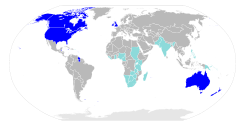
English people traditionally speak the English language, a member of the West Germanic language family. The modern English language evolved from Old English, with lexical influence from Norman-French, Latin, and Old Norse. Cornish, a Celtic language originating in Cornwall, is currently spoken by about 3,500 people. Historically, another Brythonic Celtic language, Cumbric, was spoken in Cumbria in North West England, but it died out in the eleventh century although traces of it can still be found in the Cumbrian dialect. Because of the nineteenth-century geopolitical dominance of the British Empire and the post-World War II hegemony of the United States, English has become the international language of business, science, communications, aviation, and diplomacy. English is the native language of roughly 350 million people worldwide, with another 1.5 billion people who speak it as a second language.
Literature
England has produced a wealth of significant literary figures. Early English writers include Thomas Malory and Geoffrey of Monmouth. These romantic writers were followed by a wave of more realistic writers, including Daniel Defoe, Henry Fielding, William Makepeace Thackeray, Jane Austen (often credited with inventing the modern novel), Charles Dickens, the Brontë sisters, Thomas Hardy, Joseph Conrad, Sir Arthur Conan Doyle, Mary Shelley, George Eliot, Rudyard Kipling, E.M. Forster, and H. G. Wells. In the twentieth century, Virginia Woolf, D. H. Lawrence, J. R. R. Tolkien, George Orwell, Graham Greene, Agatha Christie, Enid Blyton, and Ian McEwan all excelled. Tolkien became one of the most popular writers of the modern world, returning to a Romantic view of fiction. Children's author J. K. Rowling has had huge success.
Important poets include Geoffrey Chaucer, Edmund Spenser, Sir Philip Sydney, Thomas Kyd, John Donne, Andrew Marvell, John Milton, Alexander Pope, William Wordsworth, Lord Byron, John Keats, William Blake, Alfred Lord Tennyson, Samuel Taylor Coleridge, T.S. Eliot (an English Citizen from 1927), [Wilfred Owen]], John Betjeman, Philip Larkin, W. H. Auden, and Ted Hughes.
Media
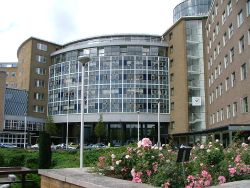
England has an unrivaled number of media outlets, and the prominence of the English language gives it a widespread international dimension. The BBC is England's publicly-funded radio and television broadcasting corporation, and is the oldest broadcaster in the world. Funded by a compulsory television license, the BBC operates several television networks and BBC Radio stations both in England and abroad. The BBC's international television news service, BBC World, is broadcast throughout the world and the BBC World Service radio network is broadcast in 33 languages globally. Most digital cable television services are provided by NTL:Telewest, and free-to-air digital terrestrial television by Freeview.
British newspapers are either quality, serious-minded newspaper (usually referred to as "broadsheets" due to their large size) and the more populist, tabloid varieties. For convenience of reading, many traditional broadsheets have switched to a more compact format, traditionally used by tabloids. The Sun has the highest circulation of any daily newspaper in the UK, with approximately a quarter of the market; its sister paper, The News of The World similarly leads the Sunday newspaper market, and traditionally focuses on celebrity-led stories. The Daily Telegraph, a right-of-center broadsheet paper, has overtaken The Times (tabloid size format) as the highest-selling of the "quality" newspapers. The Guardian is a more liberal (left-wing) "quality" broadsheet. The Financial Times is the main business paper, printed on distinctive salmon-pink broadsheet paper. A number of British magazines and journals have achieved world-wide circulation including The Economist and Nature.
Music
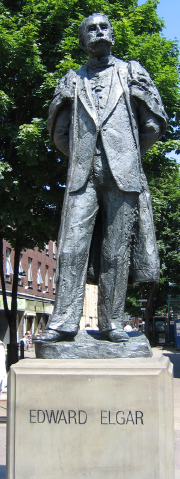
Composers from England have not achieved recognition as broad as that earned by their literary counterparts, and particularly during the nineteenth century, were overshadowed in international reputation by other European composers; however, many works of earlier composers such as Thomas Tallis, William Byrd, and Henry Purcell are still frequently performed throughout the world today. A revival of England's musical status began during the twentieth century with the prominence of composers such as Edward Elgar, Gustav Holst, William Walton, Eric Coates, Ralph Vaughan Williams, Frederick Delius, and Benjamin Britten.
In popular music, however, English bands and solo artists have been cited as the most influential and best-selling musicians of all time. Acts such as The Beatles, The Who, The Rolling Stones, Pink Floyd, Deep Purple, The Smiths, Led Zeppelin, The Clash, Black Sabbath, The Cure, Iron Maiden, David Bowie, Queen, Spice Girls, Oasis, The Police, Robbie Williams, Sir Elton John, and Radiohead are among the biggest selling in the world. England is also credited with being the birthplace of many pop-culture movements such as hard rock, British invasion, heavy metal, britpop, glam rock, drum and bass, grindcore, progressive rock, indie, punk, goth, shoegazing, acid house, and UK garage.
Religion
Ever since the break with the Roman Catholic Church in the sixteenth century, the English have predominantly been members of the Church of England, a branch of the Anglican Communion, a form of Christianity with elements of Protestantism and Catholicism. The Book of Common Prayer is the foundational prayer book of the Church of England and replaced the various Latin rites of the Roman Catholic Church.
Today, most English people practicing organized religion are affiliated to the Church of England or other Christian denominations such as Roman Catholicism and Methodism (itself originally a movement within the Anglican Church). In the 2001 Census, a little over 37 million people in England and Wales professed themselves to be Christian. Jewish immigration since the seventeenth century means that there is an integrated Jewish English population, mainly in urban areas. 252,000 Jews were recorded in England & Wales in the 2001 Census; however this represents a decline of about 50 percent over the previous 50 years, caused by emigration and intermarriage.
Immigration to Britain from India and Pakistan since the 1950s has resulted in a large number of England's populations practices Islam (818,000), Hinduism (467,000), or Sikhism (301,000). The 2001 census also revealed that about seven million people, or 15 percent of English people, claim no religion. The Church of England functions as the established church in England. Both the Church of England and the Catholic Church in England and Wales trace their formal history from the 597 Augustinian mission to the English. Other churches which had their start in England include the Methodist church, the Quakers and the Salvation Army.
Science and philosophy
Prominent English figures from the field of science and mathematics include Sir Isaac Newton, Michael Faraday, J. J. Thomson, Charles Babbage, Charles Darwin, Stephen Hawking, Christopher Wren, Alan Turing, Francis Crick, Joseph Lister, Tim Berners-Lee, Andrew Wiles, and Richard Dawkins. England played an important role in the development of Western philosophy, particularly during the Enlightenment. Jeremy Bentham, leader of the Philosophical Radicals, and his school are recognized as the men who unknowingly laid down the doctrines for Socialism. Bentham's impact on English law is also considerable. Aside from Bentham, major English philosophers include Francis Bacon, Thomas Hobbes, John Locke, Thomas Paine, John Stuart Mill, Bernard Williams, Bertrand Russell, and A.J. Ayer.
Theatre
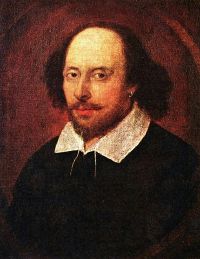
Theatre was introduced to England from Europe by the Romans who built auditoriums across the country. By the medieval period theatre had developed with the mummers' plays, a form of early street theatre associated with the Morris dance, concentrating on themes such as Saint George and the Dragon, and Robin Hood. These were folk tales re-telling old stories, and the actors traveled from town to town performing for their audiences in return for money and hospitality. The medieval mystery plays and morality plays, which dealt with Christian themes, were performed at religious festivals.
The reign of Elizabeth I in the late sixteenth century and early seventeenth century saw a flowering of drama. Perhaps the most famous playwright in the world, William Shakespeare, wrote around 40 plays that are still performed in theaters across the world to this day. They include tragedies, such as Hamlet (1603), Othello (1604), and King Lear (1605); comedies, such as A Midsummer Night's Dream (1594—1596) and Twelfth Night (1602); and history plays, such as Henry IV, part 1—2. The Elizabethan age is sometimes nicknamed "the age of Shakespeare" for the amount of influence he held over the era. Other important Elizabethan and seventeenth-century playwrights include Ben Jonson, Christopher Marlowe, and John Webster.
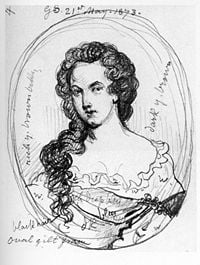
During the Interregnum (1642—1660), English theaters were kept closed by the Puritans for religious and ideological reasons. When the London theaters opened again with the Restoration of the monarchy in 1660, they flourished under the personal interest and support of Charles II. Wide and socially mixed audiences were attracted by topical writing and by the introduction of the first professional actresses (in Shakespeare's time, all female roles had been played by boys). New genres of the Restoration were heroic drama, pathetic drama, and Restoration comedy. The Restoration plays that have best retained the interest of producers and audiences today are the comedies, such as William Wycherley's The Country Wife (1676), The Rover (1677) by the first professional woman playwright, Aphra Behn, John Vanbrugh's The Relapse (1696), and William Congreve's The Way of the World (1700). Restoration comedy is famous or notorious for its sexual explicitness, a quality encouraged by Charles II (1660–1685) personally and by the rakish aristocratic ethos of his court.
In the eighteenth century, the highbrow and provocative Restoration comedy lost favor, to be replaced by sentimental comedy, domestic tragedy such as George Lillo's ''The London Merchant'' (1731), and by an overwhelming interest in Italian opera. Popular entertainment became more important in this period than ever before, with fair-booth burlesque and mixed forms that are the ancestors of the English music hall. These forms flourished at the expense of legitimate English drama, which went into a long period of decline. By the early nineteenth century it was no longer represented by stage plays at all, but by the closet drama, plays written to be privately read in a "closet" (a small domestic room).
A change came in the late nineteenth century with the plays on the London stage by the Irishmen George Bernard Shaw and Oscar Wilde and the Norwegian Henrik Ibsen, all of whom influenced domestic English drama and revitalized it.
The West End of London has a large number of theaters, particularly centered around Shaftesbury Avenue. A prolific composer of the twentieth century, Andrew Lloyd Webber, has dominated the West End for a number of years and his musicals have travelled to Broadway in New York and around the world, as well as being turned into films.
Sport
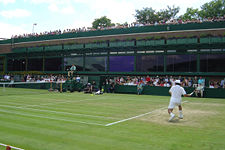
A number of modern sports were codified in England during the nineteenth century, among them cricket, rugby union and rugby league, football, tennis, and badminton. Of these, association football, rugby and cricket remain the country's most popular spectator sports. England contains more UEFA five-star and four-star rated stadia than any other country, and is home to some of the sport's top football clubs. The England national football team are considered one of the game's superpowers, having won the World Cup in 1966 when it was hosted in England. Since then, however, they have failed to reach a final of a major international tournament, though they reached the semi-finals of the World Cup in 1990 and the quarter-finals in 2002 and 2006 and Euro 2004.
The England national rugby union team and England cricket team are often among the best performing in the world, with the rugby union team winning the 2003 Rugby World Cup, and the cricket team winning The Ashes in 2005, and being ranked the second best Test Cricket nation in the world. Rugby union clubs such as Leicester Tigers, London Wasps and the Northampton Saints have had success in the Europe-wide Heineken Cup. At rugby league, the England national rugby league team competed more regularly after 2006, when England became a full test nation in lieu of the Great Britain national rugby league team, when that team retired.
Thoroughbred racing originated under Charles II of England as the "Sport of Kings" and is a royal pastime to this day. World-famous horse races include the Grand National and the Epsom Derby.
Many teams and drivers in Formula One and the World Rally Championship are based in the England. The country also hosts legs of the Formula One and World Rallying Championship calendars and has its own Touring Car Racing championship, the BTCC. British Formula One world champions include Mike Hawthorn, Graham Hill (twice), Jim Clark (twice), John Surtees (who was also successful on motorcycles), Jackie Stewart (three times), James Hunt, Nigel Mansell, and Graham Hill's son, Damon Hill. British drivers have not been as successful in the World Rally championship, with only Colin McRae and the late Richard Burns winning the title.
Sport England is the governing body responsible for distributing funds and providing strategic guidance for sporting activity in England. The 2012 Summer Olympics are to be hosted by London, England. London will become the first city to have hosted the modern Olympic Games three times, having previously done so in 1908 and 1948.
Symbols
The English flag is a red cross on a white background, commonly called the Cross of Saint George. It was adopted after the Crusades. Saint George, later famed as a dragon-slayer, is also the patron saint of England. The three golden lions on a red background was the banner of the kings of England derived from their status as Duke of Normandy and is now used to represent the English national football team and the English national cricket team, though in blue rather than gold. The English oak and the Tudor rose are also English symbols, the latter of which is (although more modernized) used by the England national rugby union team.
England has no official anthem; however, the United Kingdom's "God Save the Queen" is currently used. Other songs are sometimes used, including "Land of Hope and Glory" (used as England's anthem in the Commonwealth Games), "Jerusalem," "Rule Britannia," and "I Vow to Thee, My Country." Moves by certain groups are encouraging adoption of an official English anthem following similar occurrences in Scotland and Wales.
ReferencesISBN links support NWE through referral fees
- Goldthorpe, John H., Catriona Llewellyn, and Clive Payne. 1980. Social Mobility and Class Structure in Modern Britain. Oxford: Clarendon Press. ISBN 978-0198272472
- Macfarlane, Alan. 1979. The Origins of English Individualism: The Family, Property, and Social Transition. New York: Cambridge University Press. ISBN 978-0521295703
- Macfarlane, Alan. 1987. The Culture of Capitalism. Oxford, UK: Blackwell. ISBN 978-0631136262
- Sampson, Anthony. 1982. The Changing Anatomy of Britain. New York: Random House. ISBN 978-0394531434
Credits
New World Encyclopedia writers and editors rewrote and completed the Wikipedia article in accordance with New World Encyclopedia standards. This article abides by terms of the Creative Commons CC-by-sa 3.0 License (CC-by-sa), which may be used and disseminated with proper attribution. Credit is due under the terms of this license that can reference both the New World Encyclopedia contributors and the selfless volunteer contributors of the Wikimedia Foundation. To cite this article click here for a list of acceptable citing formats.The history of earlier contributions by wikipedians is accessible to researchers here:
The history of this article since it was imported to New World Encyclopedia:
Note: Some restrictions may apply to use of individual images which are separately licensed.
